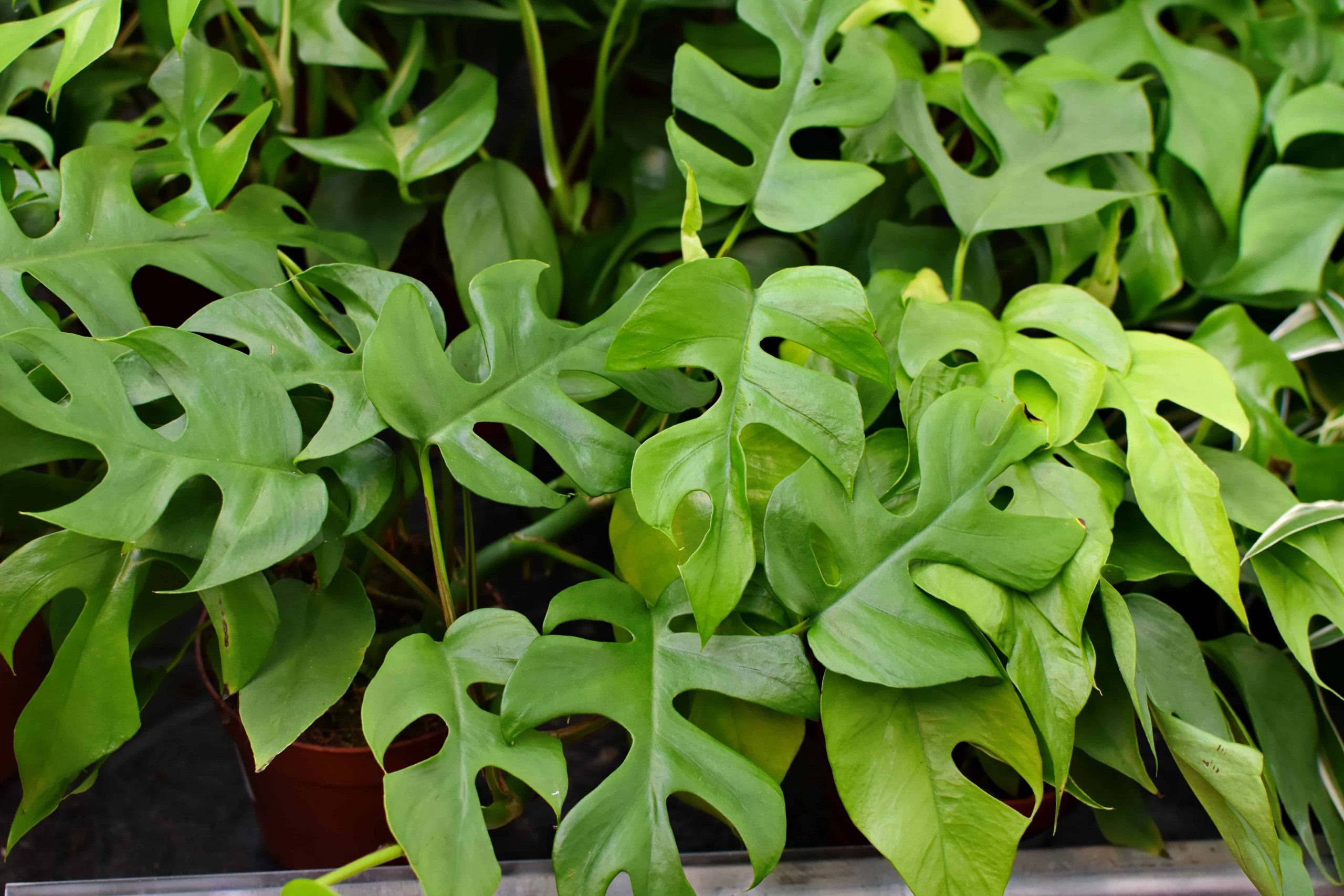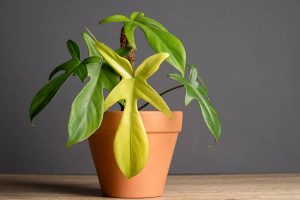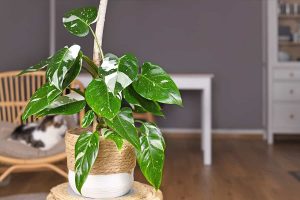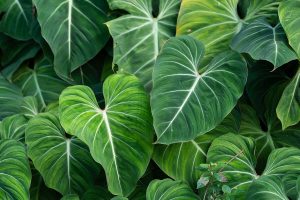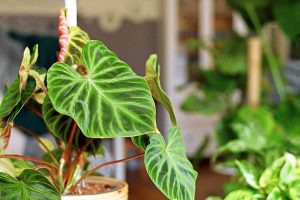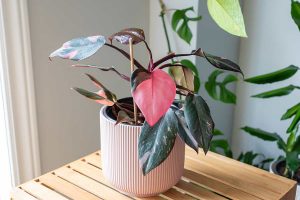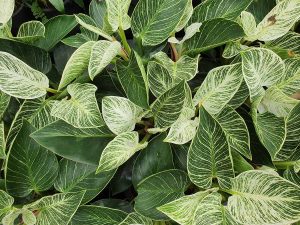There are almost 500 different species of philodendrons, and among these, there are a small number of split-leaf philodendrons. Split-leaf philodendrons
Table of Contents
What is a Split-Leaf Philodendron?
A split-leaf philodendron is exactly as it sounds; a type of philodendron which has splits in the leaves. Split-leaf philodendrons tend to have a quirky and unusual look which makes them popular among plant owners, and they also serve practical purposes when the plants are growing in the wild.
Split-leaf philodendrons, like most other philodendrons, hail from humid rainforests in tropical and subtropical climates. As such, they are accustomed to warm temperatures and therefore make ideal houseplants.
Split-Leaf Philodendron Vs Monstera Deliciosa
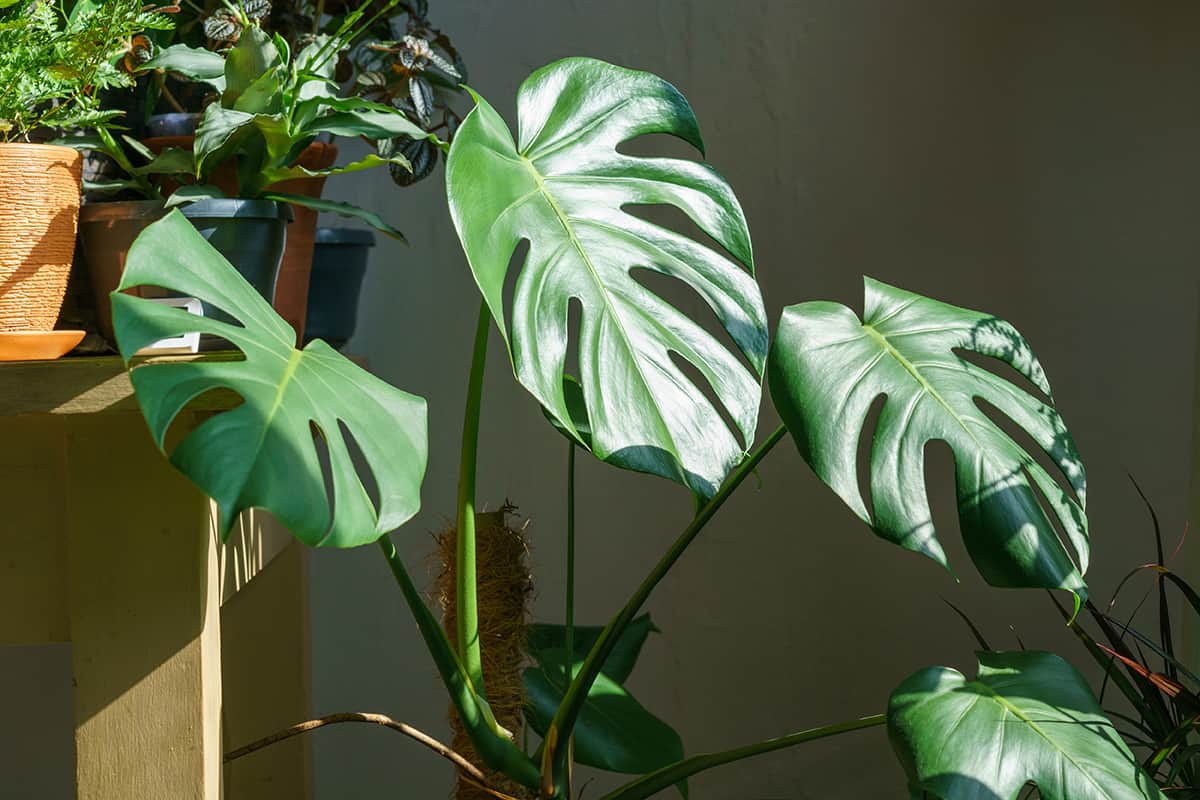
Confusingly, many split-leaf philodendrons are marketed as monstera plants, and many monstera plants are incorrectly called split-leaf philodendrons.
The most commonly made mistake is monstera deliciosas which are sold under the name of ‘split leaf philodendron’. While these two genus of plants do have a lot in common, there are also some key ways you can tell them apart.
Splits or fenestrations
You might have heard the term ‘fenestration’ being used when describing a monstera deliciosa. Fenestrations refer to the perforations and splits in the leaves of a monstera plant, however this is not a word you could use to describe a split-leaf philodendron. The difference between a fenestrated leaf and a split leaf, is that the fenestration can occur within the leaf, while a split will always start at the outer edge of the leaf.
Leaf shape
When monstera deliciosa leaves are young and lack fenestrations, they will be solid heart shapes. This means they can easily be confused for philodendron plants which also often have heart-shaped leaves. However, as the plants mature, the monstera deliciosa foliage will retain a large heart shape with fenestrations, while philodendron leaves are less obviously heart-shaped.
Knee joints
Monstera deliciosa plants have ‘knee joints’, properly called geniculums. These joints are visible on the stems of the plant, and allow the stems some flexibility of movement. Philodendron plants do not have these joints, so this is an easy telltale sign to differentiate the two types of plants.
Why Do Philodendrons Have Split Leaves?
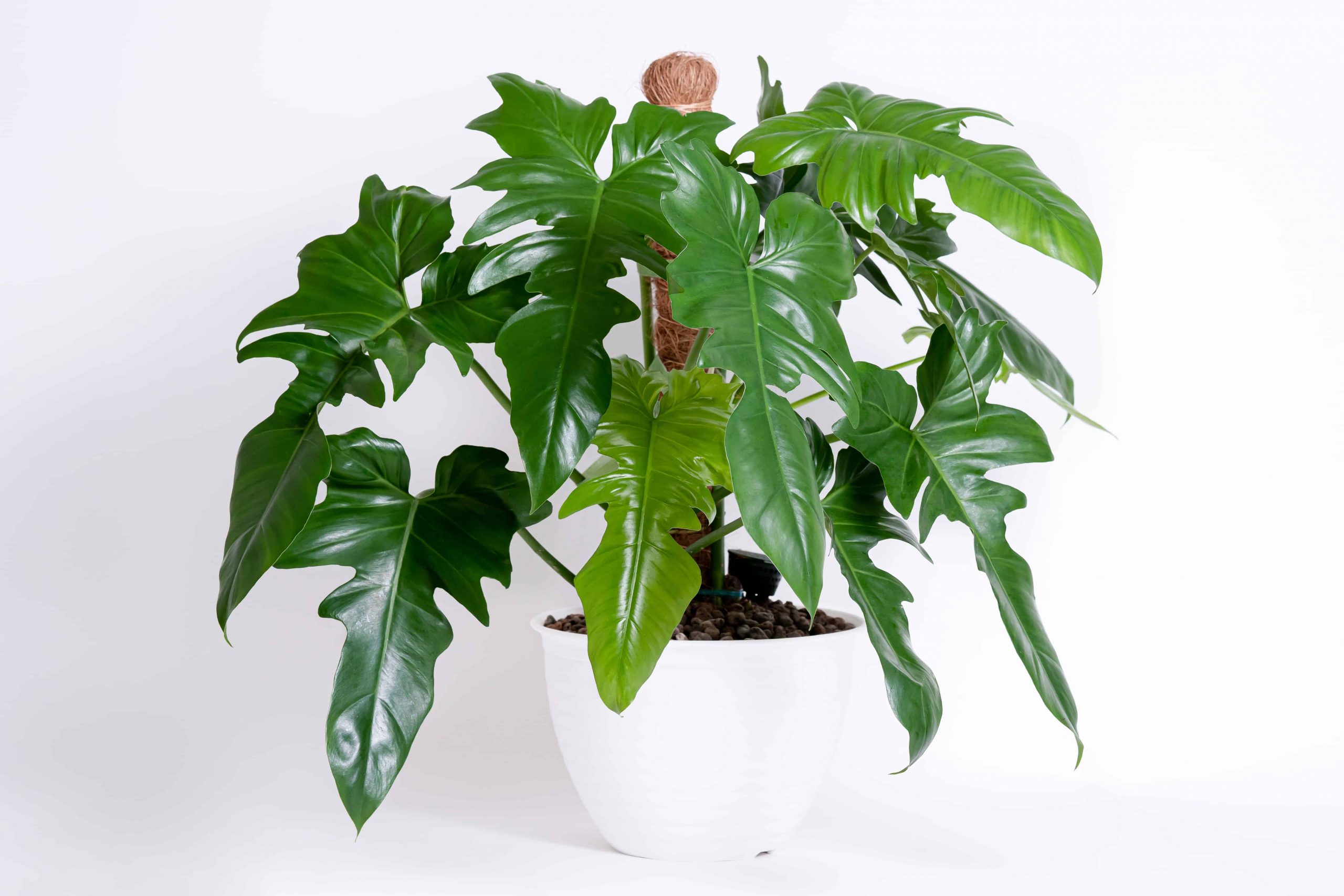
There are a number of reasons why philodendrons, as well as other tropical plants, develop split leaves, which are all to do with helping the plant thrive in its natural habitat.
Rain
Philodendrons do not like to have sitting water on their leaves, since this is a leading cause of fungal disease. By having split in their leaves, the foliage of the philodendron will not hold onto water and cause it to pool on the surface of the leaves after rainfall, and instead the rain will be directed downwards. This also serves a secondary purpose of encouraging rain to fall towards the roots of the plant, because philodendrons like to grow in moist soil.
Wind
Many botanists believe that the splits in philodendron leaves have developed in order to help protect them from damage during storms. When there is a strong breeze, the splits in the leaves will allow the wind to blow right through them, as opposed to a solid leaf that would work more like a kite and be blown over.
This means that during high winds, the philodendron is better able to remain upright and undamaged, rather than getting forced over by large leaves caught in the wind.
Light
Many large leaf philodendrons have split leaves, which helps to ensure the lower-down parts of the plants can thrive. If you imagine a plant with large upper leaves, the bottom half of the plant is going to be shaded by those leaves, and therefore struggle to grow. By developing splits in the leaves, light is allowed to pass through and reach the lower leaves to make the whole plant stronger.
Split Leaf Philodendron Species
Philodendron bipinnatifidum
This is a large, dramatic split-leaf philodendron that goes by the more common names of horsehead philodendron, tree philodendron, and panda plant. It is native to South America and is also widely cultivated as a landscape plant in other temperate climates such as New Zealand, Australia, the Philippines, and the southwest coast of the United States.
In the wild it will grow as a shrub or tree, while as a houseplant it maintains an upright habit. The foliage of this plant can span up to almost 5 feet for a single leaf. Each leaf is heavily, deeply lobed, with a dark green color and a tendency to have a drooping quality.
This plant is quite adaptable and is able to tolerate shade as well as moderate light and bright light. It will send out aerial roots from the trunk, which help to provide stability for the plant, and can also absorb moisture and nutrients.
Philodendron elegans
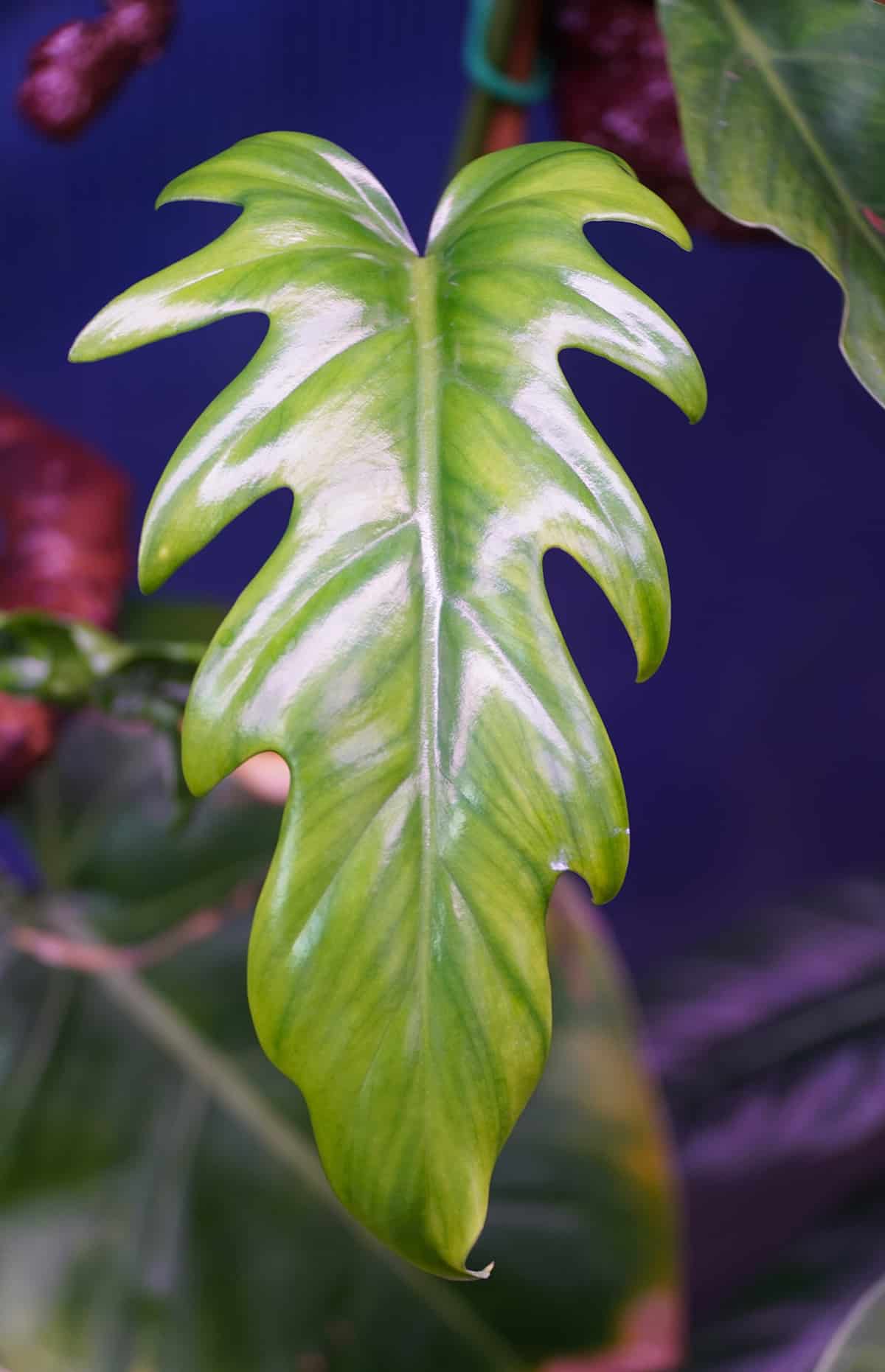
This split-leaf philodendron is most commonly known as the skeleton key philodendron, due to its heavily lobed leaves that resemble the look of a skeletal rib cage. This is quite a rare species of philodendron which can demand a high price because of this.
In its native habitat, the plant will reach heights of up to 16 feet, while when kept as a houseplant it typically will not exceed 3 feet. The skeleton key philodendron is known to be quite a slow-growing plant. It thrives in moist, well-draining soil, and medium to bright indirect light.
Philodendron squamiferum
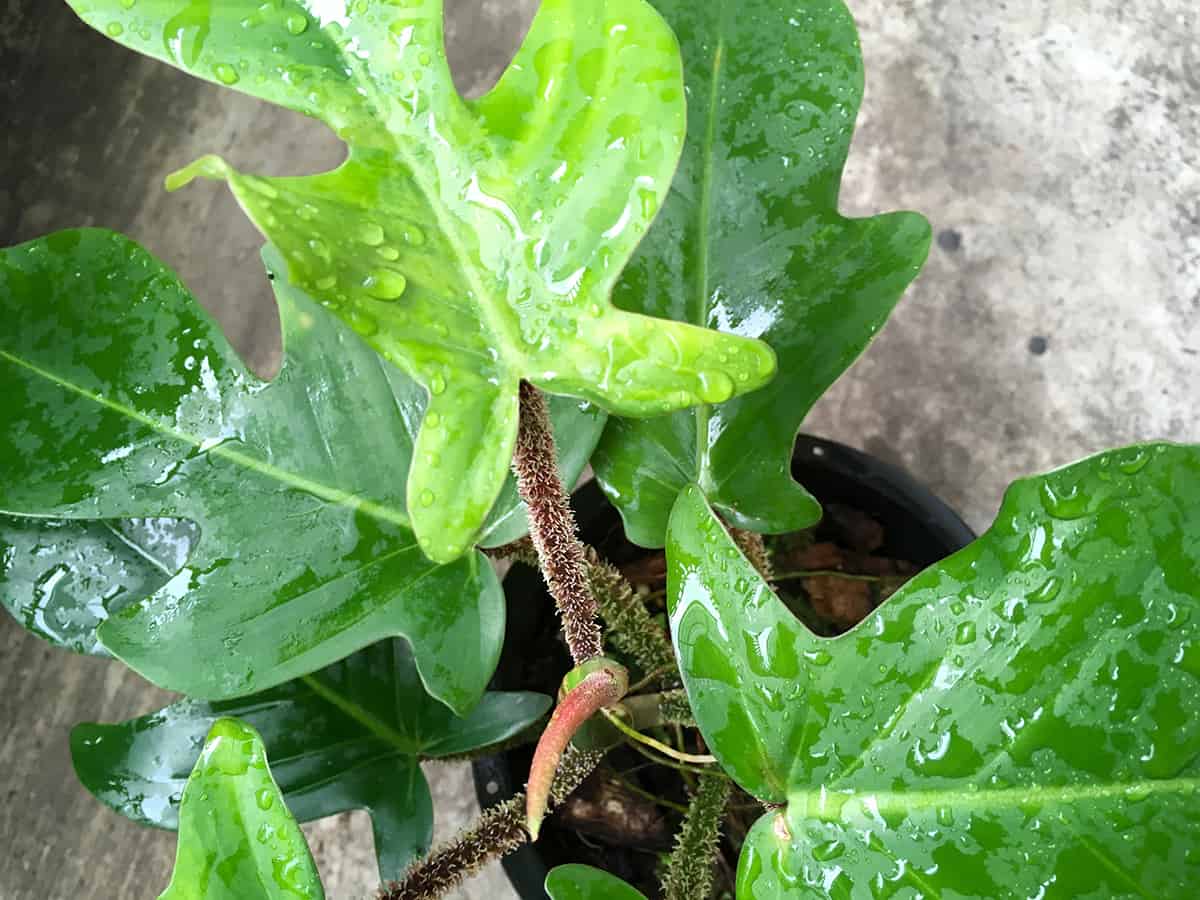
This plant is also known as the hairy philodendron, because of the dense, coarse hairs on the stems. It is native to French Guiana and Brazil, where it grows as an epiphytic plant. An epiphytic plant is one that grows on the surface of other plants and trees, but unlike a parasite, it does not absorb nutrients from the host plant.
Instead, it absorbs moisture and nutrients via its foliage, stems, and aerial roots. As an epiphytic plant, the hair philodendron can be grown in sphagnum moss, but it will also thrive as a houseplant in very well-draining soil. The leaves of this plant have five distinctive lobes, which give it the look of a split-leaf philodendron.
This plant has a climbing habit, and in its native environment, it will climb up the side of tree trunks, and rocky hills. As a houseplant, you can grow it as a climber or as a trailing plant.
Philodendron radiatum
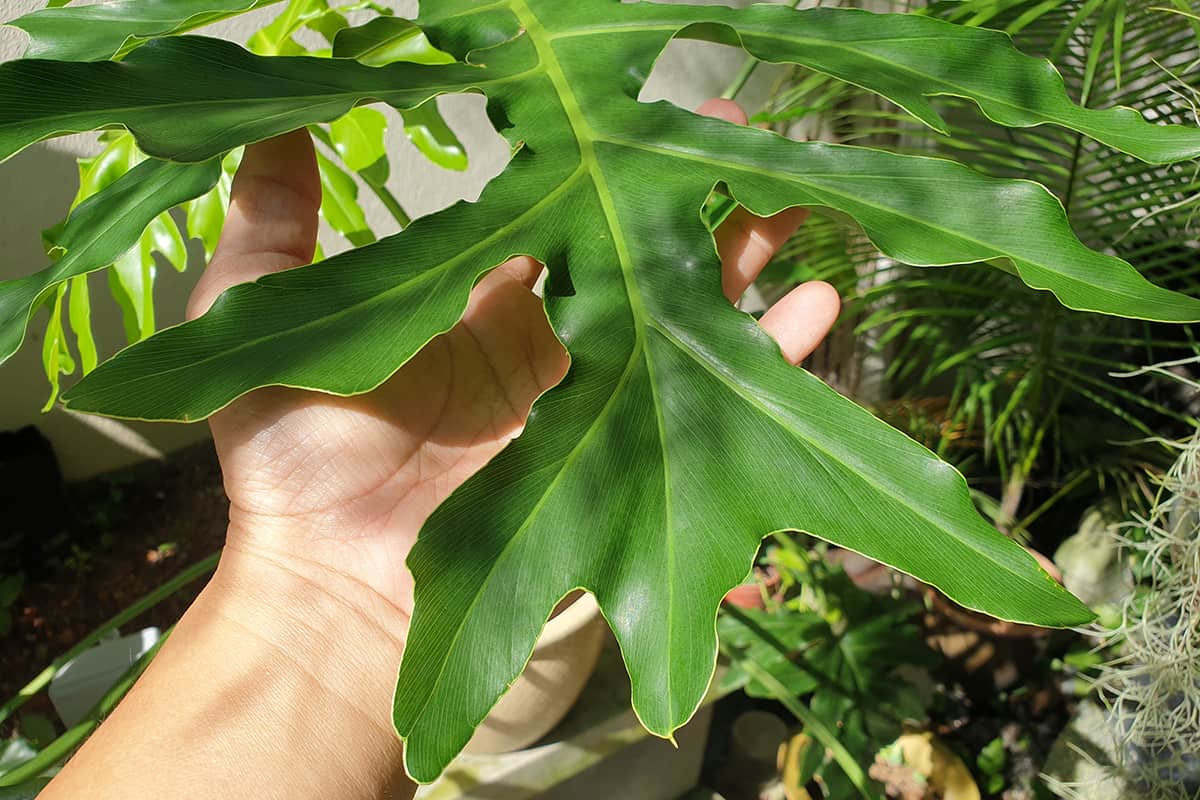
This plant is widely known as the split-leaf climber because it has heavily lobed foliage and a climbing habit. It is native to the lowlands of South America and thrives in average soil and light conditions.
The leaves of this plant can grow to be quite large, with an overall shape that is almost triangular. While this plant is commonly found in its native habitat, it is not often seen for sale as a houseplant.
Philodendron minima

This plant is confusingly not technically a philodendron at all. The plant which is sold as a philodendron minima is actually a rhaphidophora tetrasperma. It is also mistakenly sold as a mini monstera deliciosa, but it is in fact not related to either the monstera or philodendron genuses.
The confusion lies in the fact that the leaves closely mimic the look of monstera deliciosa leaves, and the way the plant has a climbing habit like many philodendron plants. You can identify the rhaphidophora tetrasperma by its heart-shaped bright green leaves, which are produced along a vine.
The foliage is split, rather than fenestrated, which is how you can tell it is not a true monstera. These plants have become very popular off the back of the popularity of monstera deliciosa, and as such, they are becoming quite easy to find at local nurseries and in online plant stores.
In order to care for it effectively, be sure to treat it as a rhaphidophora rather than mistakenly like a monstera or philodendron. These plants have lower moisture needs than monsteras and philodendrons, and they thrive in bright, direct light.
Split-Leaf Philodendron Care Tips
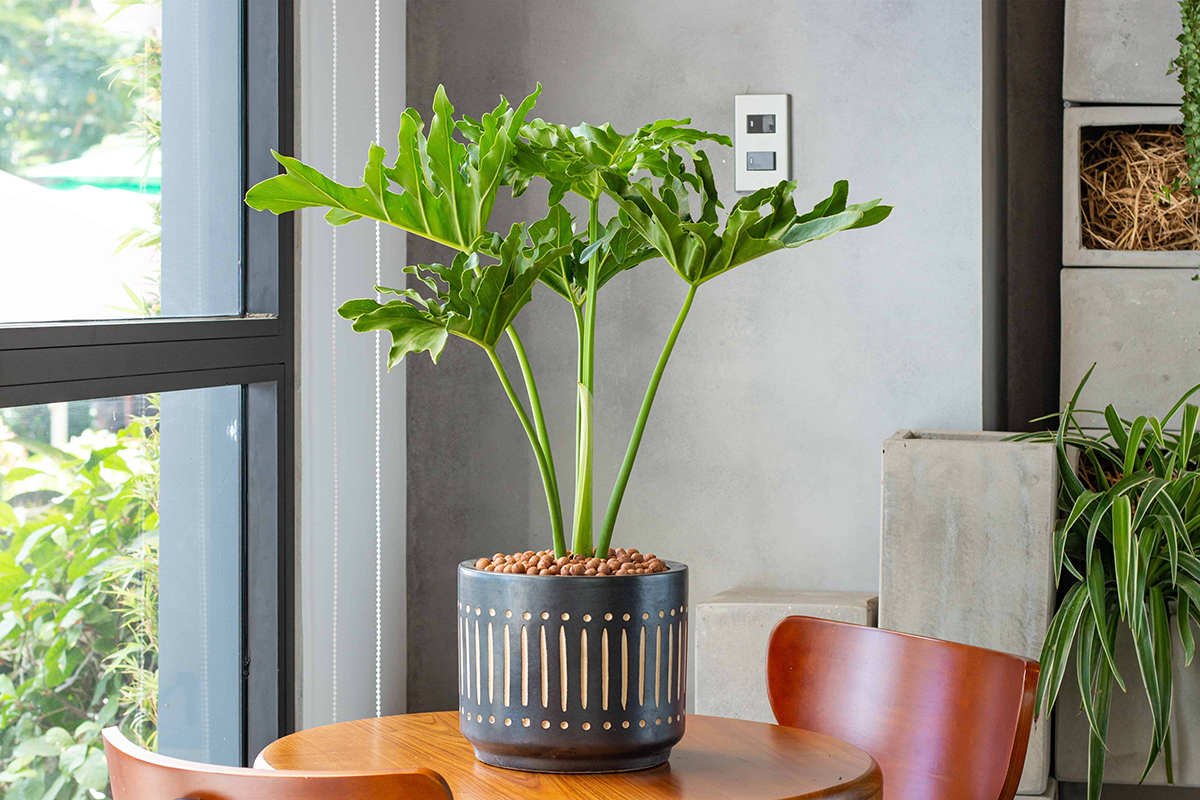
Split-leaf philodendrons enjoy the same type of care as most other philodendrons. Follow these tips to help your split-leaf philodendron thrive.
Water
Split-leaf philodendrons are not drought tolerant, and their soil should not be allowed to dry out for extended periods of time. Instead, water the plant thoroughly and deeply, then allow the top few inches of soil to dry out before you water it again.
Light
Split-leaf philodendrons enjoy moderate lighting exposure. They should not be subjected to direct light because it will burn the leaves, however bright indirect light is fine, and shade can be tolerated by some species.
Temperature
As tropical and subtropical plants, split-leaf philodendrons are accustomed to consistently warm temperatures. This means that typical room temperature in homes is ideal for philodendrons kept as houseplants. They should not be subjected to cold temperatures, so keep them away from open windows and cold draughts in the winter.
Humidity
Split-leaf philodendrons love high humidity. Spray them daily with a water spritzer to keep them in top condition, however they aren’t too fussy and can survive happily without consistent humidity.
